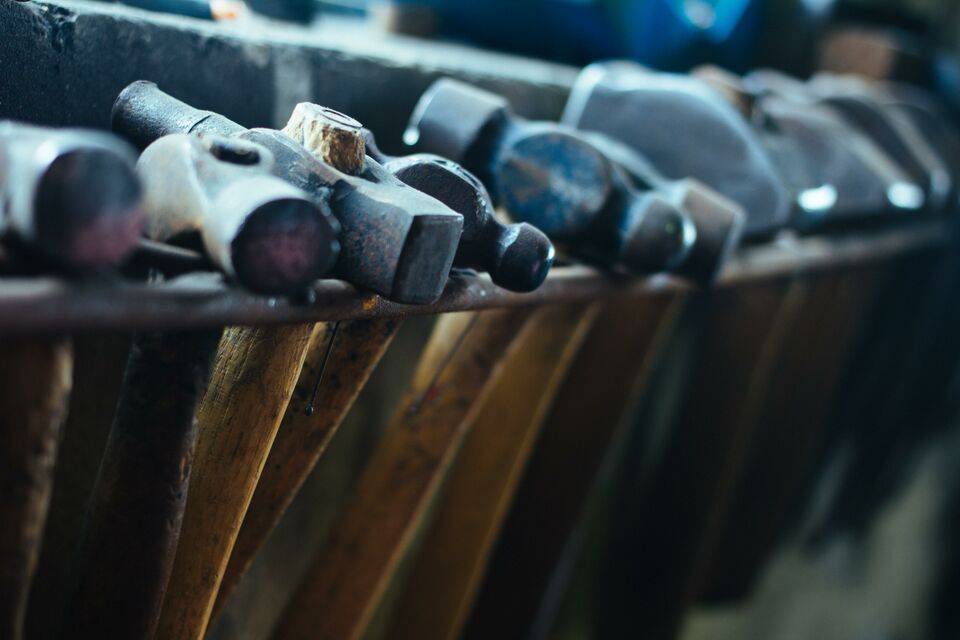There are some general rules that apply to almost all hammers and other striking tools.
- Never use a striking tool for any purpose other than that for which it was intended.
- Never use a striking tool with a loose or damaged handle or with a mushroomed head or dull cutting edge.
- Strike blow squarely – a glancing blow increases the chances of striking a finger or hand or chipping the head of the hammer.
- Never strike with the side of the hammer.
- Never strike another hammer.
- Always wear safety glasses when hammering.
- When striking chisels, punches, wedges, etc., the hammer face should be larger than the head of the struck tool.
Axes and hatchets are meant to strike wood. They should never be struck against metal, stone, or concrete. Striking faces can be used to drive common nails, but not cold chisel, rock drills, etc.
Struck toolsStruck tools include rock and star drills, cold chisels, hot chisel, wood chisels, brick chisels, punches, drift pins, and wedges. Common rules for the safe use of struck tools include:
- Always wear safety glasses.
- Use the proper tool for the job. Never use cold chisels on stone or concrete, hot chisels on cold metal, stone, or concrete, wood chisel on metal, etc.
- Never use a chisel with a mushroomed head or dull cutting edge, have them sharpened.
- Never use a punch with a mushroomed head, a slanted or chipped point, or a loose or damaged handle.
- Never use a drift pin as a punch or strike one if the struck end is chipped or mushroomed.
- Never use a star drill with a dull cutting edge or damaged head and never on anything but masonry.
- Do not use brick chisels and sets on metal or use one in bad condition.
NOTE: Always promote a discussion on any of the topics covered in the Tool Box Talks. Should any question arise that you cannot answer, don’t hesitate to contact your Employer.
